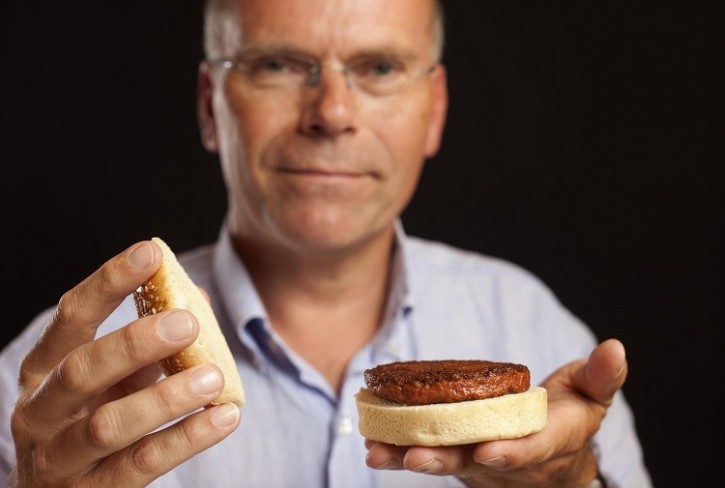Is cultivated meat a threat to farming? EU countries clash over cellular agriculture’s future

Pre-market approval for novel cultivated meat products and processes is slowly gaining traction around the world. But in the European Union, where cultivated meat was first invented, the regulatory greenlight has yet to be flicked.
If Austrian, French and Italian delegations have their way, this is how things will stay without a thorough impact assessment on cultivated meat.
At this week’s Agriculture and Fisheries Council (AgriFish) Committee Discussion, some Member State representatives argued that ‘lab-grown artificial cell-based food’ poses a threat to traditional farming and food production. Others do not agree.
The cultivated meat debate fires up
Cellular agriculture, an umbrella term encompassing the production of animal-sourced foods from cell culture, is a relatively young invention. Cultivated meat, for example, was first developed in burger form in 2013 by Dutch professor Mark Post at Maastricht University.
What is cultivated meat?
Cultivated meat, otherwise known as lab-grown or cultured meat, is produced by cultivating animal cells directly. The manufacturing process involves acquiring and banking stem cells from animals, and growing those cells in bioreactors with cell culture medium. Once skeletal muscle, fat, and connective tissues are grown, these cells are harvested, prepared, and packaged into final products.
For the best part of the decade, cultivated meat was constrained to R&D labs, until the novel food received its first regulatory approval in Singapore in late 2020. Just over three years later, and regulatory approvals are gradually spreading to other geographies (cultivated chicken has been approved in the US, and just this month, beef in Israel).
In Europe, dossiers have been received by the Swiss Federal Food Safety and Veterinary Office (FSVO) and the UK’s Food Safety Authority (FSA), but no application for cultivated meat has been received by the European Food Safety Authority (EFSA) to date, FoodNavigator understands.
Indeed, even European cultivated meat companies are seeking regulatory approval elsewhere. French cultivate chicken company Vital Meat recently submitted its dossier to Singapore’s food agency.

The debate for and against cultivated meat has been building in the EU, with some Member States taking matters into their own hands. Late last year, Italy passed a bill prohibiting the production and marketing of cultivated meat within its borders. France is now considering similar restrictions.
Other Member States, such as the Netherlands, Spain and Germany, have already made substantial investment into cultivated meat.
On Tuesday at the AgriFish Committee Discussion in Brussels, Austrian, French and Italian delegations ramped up the debate, with suggestions that cultivated food ‘raises many questions’ that need answering prior to taking market authorisation decisions.
Cultivated meat: a ‘threat’ to traditional food production
In a note to the European Council, delegations from those three Member States, with support by the Czech, Cypriot, Greek, Hungarian, Luxembourg, Maltese, Polish, Romanian, Slovak and Spanish delegations, suggested that cultivated meat is at odds with the Common Agricultural Policy.
The note was tabled by Austria’s agriculture minister, but the position is not a reflection of the Austrian Government’s stance.
European farmers contribute to some 1.3% of European GDP, but their efforts to food safety and security are ‘much more elevated’, noted the delegations. Cultivated meat ‘represents a threat’ to primary farm-based approaches and ‘genuine’ food production methods that are ‘at the heart’ of the European farming model.
As such, and before EFSA approves any cultivated meat novel food submissions, the delegations want questions answered. Such queries relate to the ethics, economics, sustainability, social society, public health, transparency of cultivated meat. And importantly, asks whether the current novel foods regulation provides a ‘suitable and comprehensive’ frame to assess the potential risks associated with these products, while ‘fully’ taking into account the ‘precautionary principle’.
In so doing, the delegations hope to ensure a transparent, science-based and comprehensive approach to assessing the development of cultivated meat production, which in its view ‘does not constitute a sustainable alternative to primary farm-based production’.
Austrian, Italian and French delegations want to know:
- Can cell-based meat production be considered as a more animal friendly alternative to animal husbandry, if it does involve the killing of animals?
- How are we to guarantee the viability of livestock farming and of rural areas?
- How do we ensure that inequalities do not increase as regards the affordability of genuine meat-based products between consumers?
- How are we to guarantee the safety of the stem cell technology to avoid health risks for consumers?
- How are we to guarantee that consumers are fully aware of the production methods, including if the product originates from a third country?
Pushback against delegations: ‘Regulating cultivated meat as a pharmaceutical product is nonsensical’
The delegations’ note and discussion has received strong pushback from cultivated meat stakeholders, describing the arguments as ‘misinformed’ and ‘disappointing’.
According to Cellular Agriculture Europe, a coalition of food companies making cultivated meat, poultry, seafood and ingredients, cellular agriculture is not a threat to European farmers, rather it can complement existing protein production and create new revenue opportunities for farmers to raise the crops needed in cell culture medium.
“The FAO predicts meat consumption will increase by ~50% by 2050 and current production methods cannot meet that demand within planetary boundaries,” noted Robert E, Jones, president of Cellular Agriculture Europe.
Supporting farmers and supporting cellular agriculture is ‘not a binary choice’, he stressed: “we can both support and protect European farmers and build a world class innovation ecosystem that creates new jobs and helps feed a growing planet without destroying it.”
Jones is also satisfied that EFSA’s novel food regulatory process is up to scratch and does not need revaluation. “Companies wanting to bring cultivated meat or seafood to market will undergo a multi-year rigorous safety review by EFSA and then each Member State will have a vote on the Commission’s draft authorisation text,” Jones explained.

This point, again, is at odds with that of the delegations, who suggest that pre-clinical and clinical studies be used as safety criteria for an opinion for EFSA, as is provided for new pharmaceutical products.
Regulating cultivated meat as a pharmaceutical product is ‘nonsensical’, according to alternative protein advocate the Good Food Institute (GFI).
“Cultivated meat is a food that will be made in food production facilities, so it’s essential that it is regulated as food – with the same world-leading safety and hygiene standards that apply to everything else we eat in Europe.
“The EU regulatory regime for pharmaceutical products is ill-placed to measure food safety, and its utilisation could weaken the ability of regulators to provide appropriate risk assessment of cultivated meat.”
Some Member States ‘very positive’ about cultivated meat: ‘Let’s not only see the threats’
Not all Member States agree with the Italian, French, and Austrian delegations’ point of view.
Germany has investment in alternative protein production, with a majority of funding being put towards cultivated, fermented and plant-based proteins; Spain has also invested significantly in its cultured meat sector, and last year the Netherlands became the first Member State to approve pre-market tastings of cultivated meat.
Last year, the Netherlands became the first country in the EU to approve pre-approval tastings of cultivated meat. And today (25 January), Dutch cultivated pork company Meatable is announcing it has submitted its dossier to hold the first legally sanctioned cultivated meat tasting on home soil.
The next step is for the Cellular Agriculture Netherlands Foundation (CANS) Expert Committee to investigate Meatable’s submission documents and provide feedback. The committee can then approve for tastes to take place or request more information.
“We can’t wait to invite people to try our delicious pork sausages and experience for themselves that it doesn’t just look and taste like meat it is meat,” said Meatable co-founder and CEO Krijn de Nood.
At the Council debate this week, the Netherlands’ representative said they understand the concerns regarding public health and the future of livestock farmers, but also has global food security front-of-mind.
“Therefore, we believe that it is important to support innovations that create production methods for animal proteins complementary to, and not as a substitute to, conventional sustainable production.”
Acknowledging that more research is required into food safety and lower energy use, the representative said that the Netherlands is investing in this research. “I would plea to [also looking] at the opportunities of this development and not only see the threats.”
The Danish representative said Denmark remains ‘very positive’ towards the development of innovative biotechnological solutions that could lead to new sustainable proteins. And similarly to the Netherlands, believes the ‘upside’ should also be considered.
“We already have EU regulation on novel food in place. This sets a clear legal framework that is solidly based on science. Denmark sees no reason for hindering the development and marketing of cell-based products, as long as such products are safe and fulfil the legal requirements and as long as they are labelled in a way that is not misleading to consumers.
“If these requirements are met, it must be then up to consumers if they want to buy these products.”
